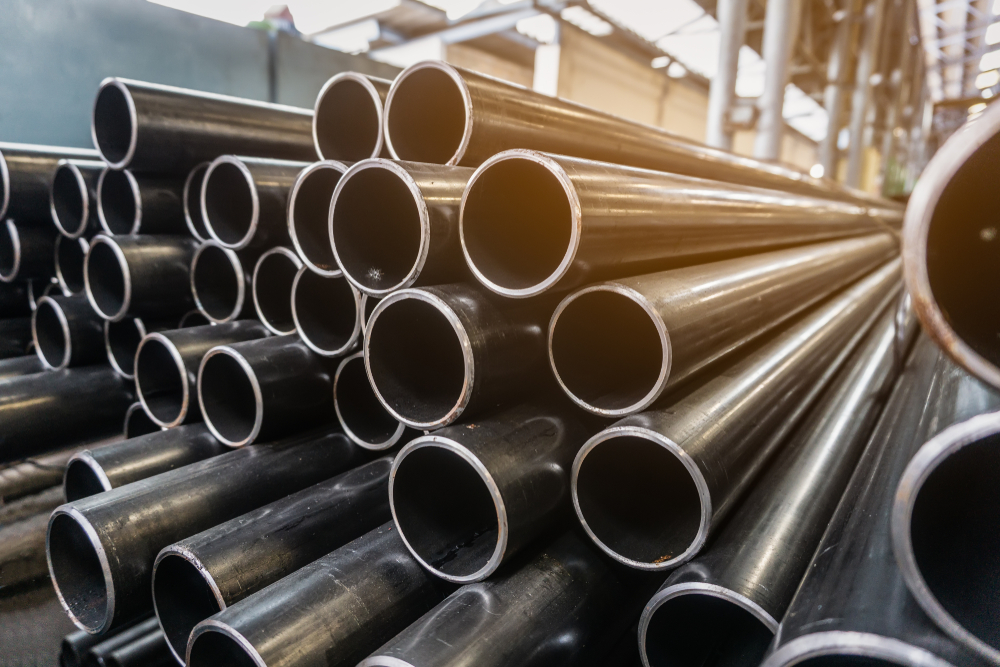Stainless steel is in fact an iron alloy with a minimum of 10.50% chrome. The chrome produces a thin oxide layer on the metal’s surface, which prevents corrosion. Increasing the amount of chrome increases protection against corrosion.
- Alloy – a mixture of two or more chemical elements, when at least one of them is a metallic element.
- Chrome – a strong, gray, shiny metal.
- Oxide – a compound of an element or other substance with oxygen.
- Corrosion – a chemical process that is destructive to a certain substance, stemming from the substance’s exposure to the environment or its contact with another substance (such as oxygen).
Other ingredients are added as well, in order to enhance the alloy’s structure and properties.
The main requirement from stainless steel is resistance to corrosion for a particular application or environment. When selecting a certain type of stainless steel, it must first meet the requirements of resistance to corrosion. Additional mechanical or physical properties will also need to be taken into account in order to fulfill the application’s specifications.
The British Bristol 188 model airplane was nicknamed the “flaming pencil”. This was a supersonic research aircraft, and in order to make it resistant to temperatures over 250 degrees Celsius, it was made of stainless steel.
When was stainless steel discovered?
It is widely agreed that stainless steel was discovered in 1913 by metallurgist (metal scientists) Harry Brearley.
When conducting experiments with many types of steel as part of the process of developing weapons, he noticed that steel with 13% chrome would not rust even after several months. However, the picture is a little more complicated, as there were other researchers who worked on developing stainless steel at the same time, and they also claimed to be the ones who have discovered it.
Can stainless steel rust?
Although stainless steel is much more resistant to rust than normal iron alloys, it can rust in some cases. The alloy is called “stain less” but not “stain impossible”. In a normal environment, stainless steel will not rust, as can be seen in household sinks, cutlery, pots and countertops.
When conditions are more aggressive, basic stainless steel types can rust, and other stainless steel alloys must be used.
The first official supplier of Swiss pocketknives was Victorinox. In 1909 its founder, Carl Elsener, changed its name to Victoria in honor of his mother who had passed away, and in 1921 added “inox” (the international symbol for stainless steel) when the company began using this material in its pocketknives.
The first official supplier of Swiss pocketknives was Victorinox. In 1909 its founder, Carl Elsener, changed its name to Victoria in honor of his mother who had passed away, and in 1921 added “inox” (the international symbol for stainless steel) when the company began using this material in its pocketknives.
Can stainless steel be recycled?
Theoretically, stainless steel can be recycled 100%, and its long life cycle makes it a very important environmental “player” compared to other materials. Products made of stainless steel are planned for a long life cycle, sometimes spanning several decades. This is one of the reasons it is chosen in the first place.
At some point in time, steel reaches the end of its life cycle and is no longer effective. Nevertheless, it can still be recycled. Its main ingredients (chrome, nickel, etc.) are very valuable, and can all be separated from the others and reused.
Constructing the European human rights court in Strasburg cost some 454 million Franks and was completed in 1995. The building is made of 2 cylindrical structures and houses the court and various committees. Each of these cylinders is coated in stainless steel.






